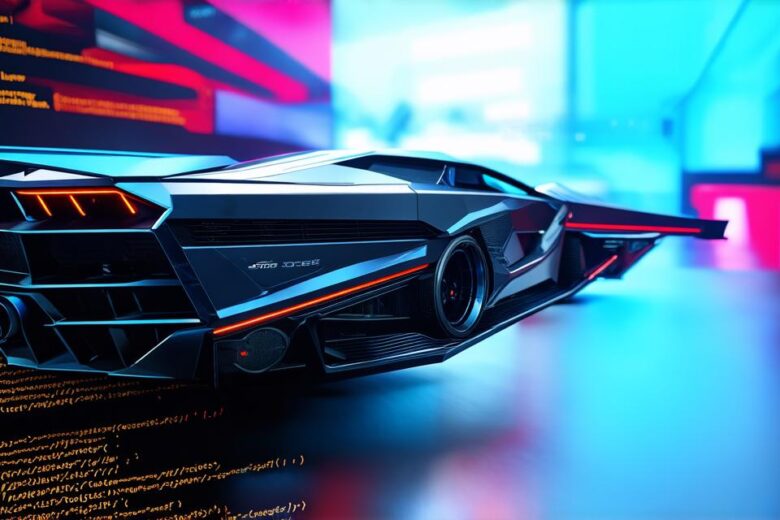Table of Contents
- Introduction
- The Importance of Multiplayer Game Development
- What You Need to Know About Unreal Engine
- Networking in Unreal C++
- Synchronization and Prediction
- AI in Multiplayer Games
- Animation and Character Movement
- Multiplayer Optimization Techniques
- Security and Anti-Cheat Measures
- Summary
- FAQs
Introduction
As an intermediate game developer, you may be looking for ways to take your Unreal Engine skills to the next level. If so, then you’re in luck! In this comprehensive guide, we will explore various aspects of Unreal C++ multiplayer game development and share some expert tips and tricks to help you master this exciting field.
The Importance of Multiplayer Game Development
Multiplayer games are becoming increasingly popular, with millions of players around the world enjoying online gaming experiences. There are several reasons why multiplayer games have become so popular. Firstly, they offer a social aspect that allows players to connect with friends and family, or meet new people from all over the world. Secondly, multiplayer games often have more engaging and challenging content than single-player games, as players must compete against each other to achieve their goals. Finally, multiplayer games can be more dynamic and unpredictable, with players constantly changing tactics and strategies in response to their opponents.
What You Need to Know About Unreal Engine
Unreal Engine is a powerful game engine that is widely used in the gaming industry. It was first released in 1998 by Epic Games and has since been updated and refined several times, with the latest version being Unreal Engine 4. Some of the key features of Unreal Engine include:
- High-performance rendering capabilities
- Advanced physics simulation
- Support for a wide range of programming languages, including C++, Blueprints, and Python
- Integration with a variety of tools and services, such as Photoshop, Maya, and Steam
- Large and active community of developers and users
Unreal C++ is the primary programming language used in Unreal Engine, and it is the focus of this guide. If you’re already familiar with C++ or have some experience with game development, then Unreal C++ is a great choice for creating stunning multiplayer games that take advantage of Unreal Engine’s powerful features.
Networking in Unreal C++
Understanding Client/Server Architecture
Client/server architecture is the most common way to implement networking in multiplayer games. In this model, there is a server that manages the game world and handles all network communication, and multiple clients that connect to the server and send/receive data as needed. This allows for centralized control of the game world and ensures that all players are playing on the same instance of the game.
Implementing Networking in Unreal Engine
To implement networking in Unreal Engine, you’ll need to use the networking API provided by the engine. This API includes classes for creating clients, servers, and sockets, as well as functions for sending and receiving data over the network. You can also use the built-in networking features of Unreal Engine, such as RPC (Remote Procedure Call) and netmessages, to simplify the process of implementing networking in your game.
Synchronization and Prediction
What is Synchronization?
Synchronization is the process of ensuring that all clients in a multiplayer game are seeing the same state of the game world at all times. This is achieved by exchanging data between clients and servers in real-time, so that any changes made to the game world are reflected on all clients immediately.

Implementing Prediction in Unreal Engine
Prediction is a technique used to reduce lag in multiplayer games by allowing clients to make assumptions about what will happen next based on previous network traffic. For example, if a client sees that an enemy player is moving towards them, they can predict where the enemy player will be in a few seconds and take appropriate action accordingly.
AI in Multiplayer Games
Introduction to AI in Games
Artificial intelligence (AI) is becoming increasingly important in modern games, as players demand more intelligent and responsive opponents. AI can be used to create a wide range of challenging enemies, from simple shooters to complex strategy games. There are several different approaches to implementing AI in games, including rule-based systems, decision trees, and neural networks.
Common AI Techniques Used in Multiplayer Games
You should explore the various AI techniques available in Unreal Engine, as well as animation and character movement techniques to create realistic and engaging gameplay experiences.
Animation and Character Movement
To get started with Unreal C++, you should familiarize yourself with the networking API provided by the engine, as well as techniques such as prediction and synchronization. You should also explore the various AI techniques available in Unreal Engine, as well as animation and character movement techniques to create realistic and engaging gameplay experiences.
Multiplayer Optimization Techniques
With these skills and knowledge, you’ll be well on your way to creating your own multiplayer games using Unreal C++.
Security and Anti-Cheat Measures
Summary
Unreal C++ is a powerful tool for creating stunning multiplayer games that take advantage of Unreal Engine’s advanced features. To get started with Unreal C++, you should familiarize yourself with the networking API provided by the engine, as well as techniques such as prediction and synchronization. You should also explore the various AI techniques available in Unreal Engine, as well as animation and character movement techniques to create realistic and engaging gameplay experiences.
FAQs
Unreal C++ is a powerful tool for creating stunning multiplayer games that take advantage of Unreal Engine’s advanced features. To get started with Unreal C++, you should familiarize yourself with the networking API provided by the engine, as well as techniques such as prediction and synchronization. You should also explore the various AI techniques available in Unreal Engine, as well as animation and character movement techniques to create realistic and engaging gameplay experiences.
